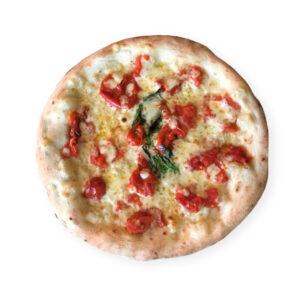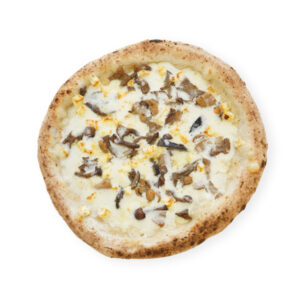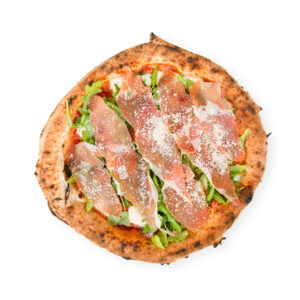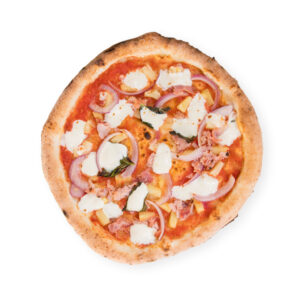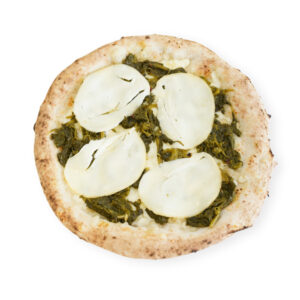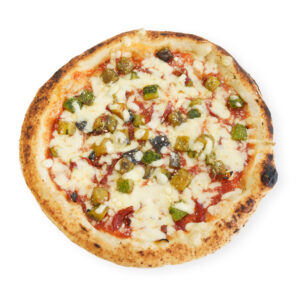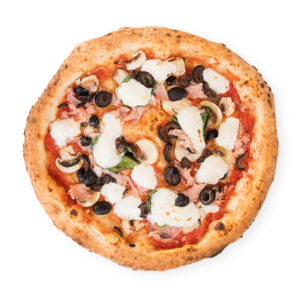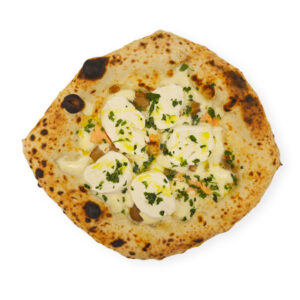- No products in the cart.
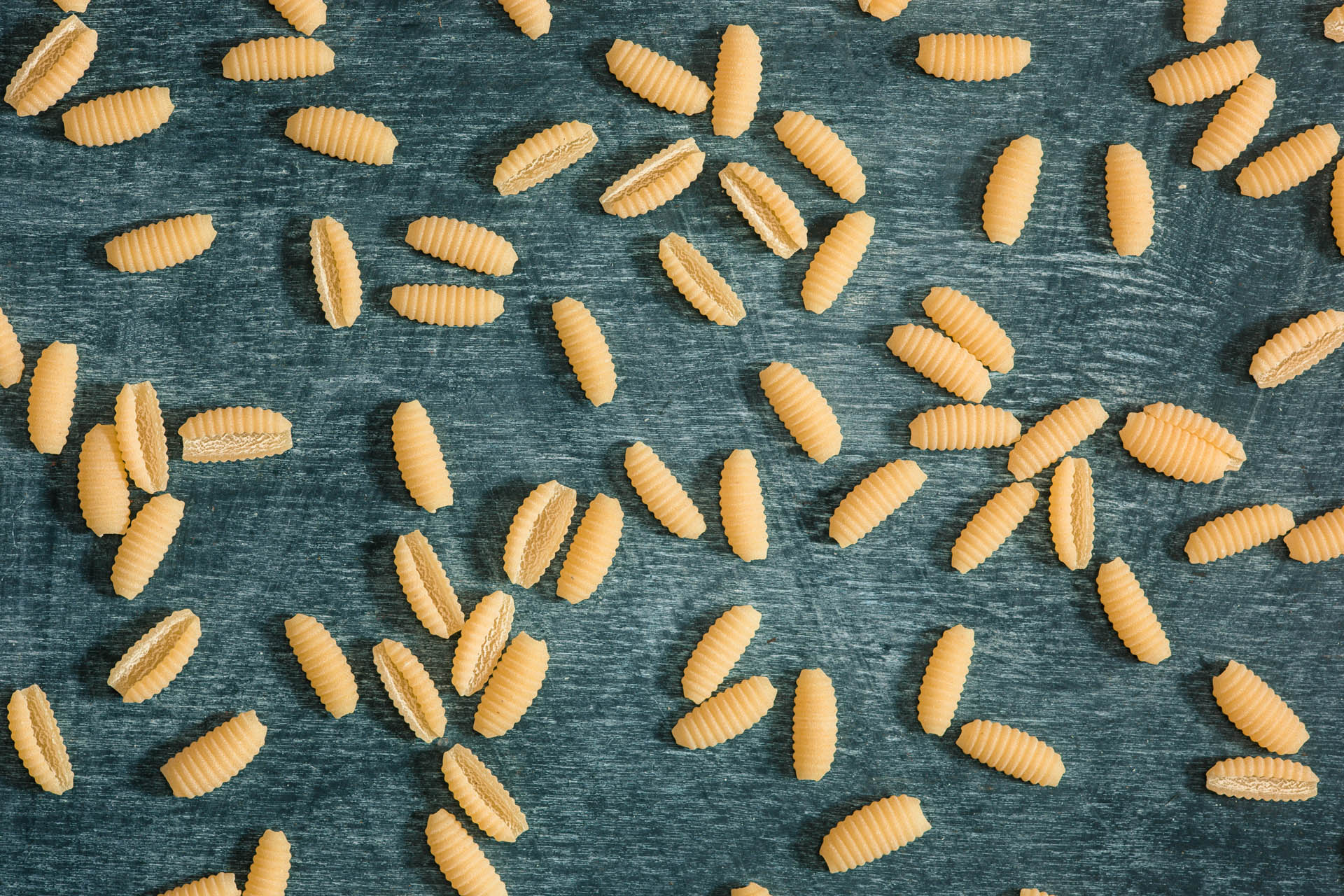
Frozen pizzas
Showing 1–16 of 23 results
-
Pizza four Seasons
£34,00 -
4 cheese pizza with tomato
£25,50 -
Calabrian salami pizza
£29,75 -
capricious pizza
£29,75 -
Pizza Capri
£29,75 -
Salmon and burrata pizza
£34,00
What is it
The International Regulation is a set of codified rules, orally transmitted by neapolitan’s generation of pizzamaker, passed down from father to son.
In 1984 Antonio Pace and Lello Surace reunited the most important and famous pizzamaker of the time to write down the fundamental rules in order to recognize and differentiate the True Neapolitan Pizza from the other type of pizza, giving it the maximum dignity. Since then, the International Regulation has been the heart of the Associazione Verace Pizza Napoletana, which protect the tradition of this old recipe and spead its secrets, defending its uniqueness and peculiarity.
How to prepare the True Neapolitan Pizza?
Finally we have the original repice written down by old generation of pizzamaker.
Let’s analyze the final aspect of the true neapolitan pizza after cooking in the wood-fired oven:
1. The Neapolitan pizza is roundish, with a diameter max 35cm;
2. The Neapolitan pizza presents a raised edge (the famous “cornicione”), swollen and free from burns, 1-2 cm;
3. The Neapolitan pizza must be soft and and
The ingredients
Now let’s move on and analyze the ingredients to prepare the True neapolian pizza’s dough.
The following doses are based on 1 litre (1000ml) of water;:
– Water: 1 litre (1000 ml)
– Salt: 40-60 grams
– Yeast (based on temperature and humidity):
Fresh beer yeast 0.1-3 grams
Mother Yeast 5-20% of flour used
Dry yeast 1/3 of fresh yeast used (1 gram of dry for 3 grams of fresh)
– Flour: 1,600/1,800 (depending on the degree of absorption).
The preparation
Flour, water, salt and yeast are mixed together, starting from the water, making sure that direct contact between salt and yeast does not occur for more than 5 minutes, otherwise the salt will damage the yeast cells. Pour a litre of water into a mixer, dissolve between 40 and 60g of salt, add 10% of the total amount of flour, then add yeast.
Start the mixer, gradually add the rest of the flour until the desider dough consistency is achieved (optimal point of the dough). The dough must be worked in the fork mixer, spiral, with dipping arms (basket with rounded and rounded corners) until a single compact mass is obtained. The quantity of water that a flour is able to absorb (hydration) is very important to obtain an optimal consistency of the dough.
Fermentation and maturation
Once extracted from the kneading machine, it is placed on a work table in the pizzeria where it is left to rest covered with a damp cloth so that the surface cannot become hard, forming a sort of crust caused by the evaporation of the humidity released by the dough itself. After the time deemed necessary to settle and rest, the dough is formed, traditionally by hand. With the help of a spatula, a portion of leavened dough is cut from the dough placed on the work bench and then given a form of dough. In the Neapolitan technique, in the traditional hand-made piece, the dough is shaped (staglio) in the form of balls with a technique that recalls the preparation of mozzarellas (mozzatura).
For ” Verace Pizza Napoletana” – (Vera Pizza Napoletana) the dough balls must weigh between 200 and 280 g, to obtain a pizza with a diameter between 22 – 35 cm. Once the loaves are formed, a second leavening takes place in boxes for food of variable duration, depending on the temperature and humidity of the environment and the absorption of the flour used. Maturation consists of a series of biochemical and enzymatic processes that split the most complex structures, proteins and starches into simpler elements. Recommended levitation time Min 8 – max 24 hours (with additional hours of kneading – 4 hours).
Forming the pizza base
With a motion from the centre outwards, and with the pressure of the fingers of both hands on the dough ball, the base is turned over and around many times. In doing this the ‘‘pizzaiolo” (pizza maker)’ forms a disk of dough (disco di pasta). From the centre the thickness is no more than 0.25 cm variance ±10% tolerated).
Condiments
The true Neapolitan pizza must be garnished with ingredients preferably from Campania regions.
The peeled tomato crusched by hand doesn’t have to look too dense but chunky.
In case of fresh tomato, it has to be chopped in slices.
The buffalo mozzarella (chopped in slices) or the fior di latte (chopped into strips) have to be spread uniformly on the pizza.
The grated cheese (if used) has to be spread on the pizza with a circular and uniform movement of the hand.
The fresh basil leaves are just put on the condiments.
The extra virgin olive oil is poured with a spiral motion.
The cooking
The cooking must be done exclusively in a wood-fired oven, which has reached a temperature between 430-480C°. With these temperatures, just insert the pizza for 60-90 seconds. The pizza will cook evenly across the entire circumference.
Here we have our neapolitan pizza, beware of imitations and enjoy your pizza!



